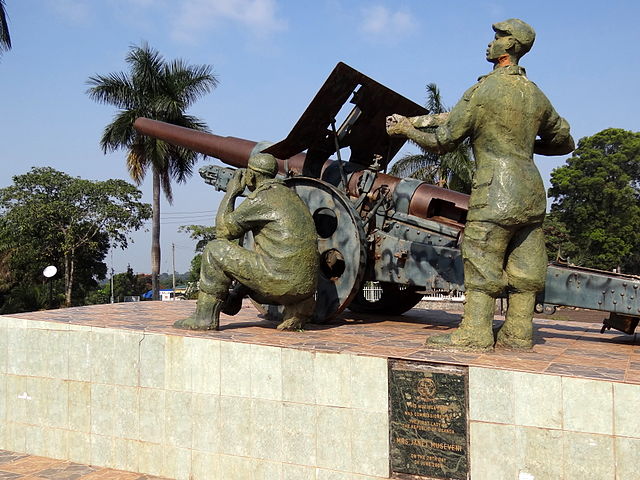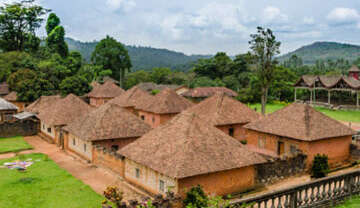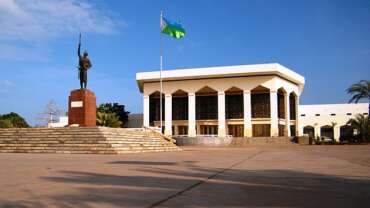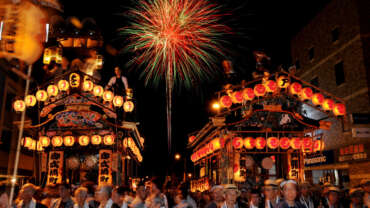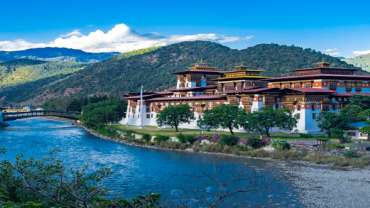Uganda - You're Welcome!
Uganda is a landlocked country in East Africa whose diverse landscape encompasses the snow-capped Rwenzori Mountains and immense Lake Victoria. Its abundant wildlife includes chimpanzees as well as rare birds. Remote Bwindi Impenetrable National Park is a renowned mountain gorilla sanctuary. Murchison Falls National Park in the northwest is known for its 43m-tall waterfall and wildlife such as hippos.
History of Uganda
This discussion focuses on the history of Uganda since the 19th century. For a detailed treatment of Uganda’s early history and of the country in its regional context, see Eastern Africa, history of.
The early history of Uganda, like much of sub-Saharan Africa, is a saga of movements of small groups of cultivators and herders over centuries. Cultures and languages changed continuously as peoples slowly migrated to other regions and intermingled. By the mid-19th century, when the first non-African visitors entered the region later to become the Uganda Protectorate, there were a number of distinct languages and cultures within the territory. The northern areas were occupied generally by peoples speaking Nilotic and Sudanic languages, while the central, western, and southern portions of the territory were predominantly occupied by Bantu-speaking peoples.
Bunyoro and Buganda
The organization of the peoples who came to inhabit the area north of the Nile River was mainly based on their clan structures. In this respect the northerners differed markedly from the peoples to the southwest of the Nile. There, peoples were organized into states—or “kingdoms,” as they were labeled by the earliest European visitors. The dominant state was Bunyoro-Kitara, which originated at the end of the 15th century and, under able rulers, extended its influence eastward and southward over a considerable area. To the south there were a number of lesser states, each with a chief who, like the ruler of Bunyoro-Kitara, combined priestly functions with those of a secular leader. To the southeast of Bunyoro-Kitara, the smaller state of Buganda grew as an offshoot of its larger neighbour. By the end of the 18th century, however, the boundaries of Bunyoro-Kitara had been stretched so far that the authority of the ruler began to weaken, and a succession of pacific chiefs accelerated this decline. Simultaneously the smaller, more compact state of Buganda enjoyed a succession of able and aggressive kabakas (rulers), who began to expand at the expense of Bunyoro-Kitara.
It was during the period of Buganda’s rise that the first Swahili-speaking traders from the east coast of Africa reached the country in the 1840s. Their object was to trade in ivory and slaves. Kabaka Mutesa I, who took office about 1856, admitted the first European explorer, the Briton John Hanning Speke, who crossed into the kabaka’s territory in 1862.
Henry Morton Stanley, the British-American explorer who reached Buganda in 1875, met Mutesa I. Although Buganda had not been attacked, Achoiland, to the north, had been ravaged by slavers from Egypt and the Sudan since the early 1860s, and, on the death of Kamrasi, the ruler of Bunyoro, his successor, Kabarega, had defeated his rivals only with the aid of the slavers’ guns. Moreover, an emissary from the Egyptian government, Linant de Bellefonds, had reached Mutesa’s palace before Stanley, so the kabaka was anxious to obtain allies. He readily agreed to Stanley’s proposal to invite Christian missionaries to Uganda, but he was disappointed, after the first agents of the Church Missionary Society arrived in 1877, to find that they had no interest in military matters. In 1879 representatives of the Roman Catholic White Fathers Mission also reached Buganda. Although Mutesa I attempted to limit their movements, their influence rapidly spread through their contact with the chiefs whom the kabaka kept around him, and inevitably the missionaries became drawn into the politics of the country. Mutesa I was not concerned about these new influences, however, and, when Egyptian expansion was checked by the Mahdist rising in the Sudan, he was able to deal brusquely with the handful of missionaries in his country. His successor, Mwanga, who became kabaka in 1884, was less successful: he was deposed in 1888 while attempting to drive the missionaries and their supporters from the country.
The Uganda Protectorate
Mwanga, who was restored to his throne with the assistance of the Christian (both Roman Catholic and Protestant) Ganda, soon faced European imperialism. Carl Peters, the German adventurer, made a treaty of protection with Mwanga in 1889, but this was revoked when the Anglo-German agreement of 1890 declared all the country north of latitude 1° S to be in the British sphere of influence. The Imperial British East Africa Company agreed to administer the region on behalf of the British government, and in 1890 Captain F.D. Lugard, the company’s agent, signed another treaty with Mwanga, whose kingdom of Buganda was now placed under the company’s protection. Lugard also made treaties of protection with two other chiefs, the rulers of the western states of Ankole and Toro. However, when the company did not have the funds to continue its administrative position, the British government, for strategic reasons and partly through pressure from missionary sympathizers in Britain, declared Buganda its protectorate in 1894.
Britain inherited a country that was divided into politico-religious factions, which had erupted into civil war in 1892. Buganda was also threatened by Kabarega, the ruler of Bunyoro, but a military expedition in 1894 deprived him of his headquarters and made him a refugee for the rest of his career in Uganda. Two years later the protectorate included Bunyoro, Toro, Ankole, and Busoga, and treaties were also made with chiefs to the north of the Nile. Mwanga, who revolted against British overlordship in 1897, was overthrown again and replaced by his infant son.
A mutiny in 1897 of the Sudanese troops used by the colonial government led Britain to take a more active interest in the Uganda Protectorate, and in 1899 Sir Harry Johnston was commissioned to visit the country and to make recommendations on its future administration. The main outcome of his mission was the Buganda Agreement of 1900, which formed the basis of British relations with Buganda for more than 50 years. Under its terms the kabaka was recognized as ruler of Buganda as long as he remained faithful to the protecting authority. His council of chiefs, the lukiko, was given statutory recognition. The leading chiefs benefited most from the agreement, since, in addition to acquiring greater authority, they were also granted land in freehold to ensure their support for the negotiations. Johnston made another agreement of a less-detailed nature with the ruler of Toro (1900), and subsequently a third agreement was made with the ruler of Ankole (1901).
Meanwhile, British administration was being gradually extended north and east of the Nile. However, in these areas, where a centralized authority was unknown, no agreements were made, and British officers, frequently assisted by agents of Buganda, administered the country directly. By 1914 Uganda’s boundaries had been fixed, and British control had reached most areas.
Growth of a peasant economy
Early in the 20th century Sir James Hayes Sadler, who succeeded Johnston as commissioner, concluded that the country was unlikely to prove attractive to European settlers. Sadler’s own successor, Sir Hesketh Bell, announced that he wished to develop Uganda as an African state. In this he was opposed by a number of his more senior officials and in particular by the chief justice, William Morris Carter. Carter was chairman of a land commission whose activities continued until after World War I. Again and again the commission urged that provision be made for European planters, but their efforts were unsuccessful. Bell himself had laid the foundations for a peasant economy by encouraging the Africans to cultivate cotton, which had been introduced into the protectorate as a cash crop in 1904. It was mainly because of the wealth derived from cotton that Uganda became independent of a grant-in-aid from the British Treasury in 1914.
People of Uganda
Ethnic groups
Although Uganda is inhabited by a large variety of ethnic groups, a division is usually made between the “Nilotic North” and the “Bantu South.” Bantu speakers form the largest portion of Uganda’s population. Of these, the Ganda remain the largest single ethnic group, constituting roughly one-sixth of the total national population. Other Bantu speakers are the Soga, Gwere, Gisu, Nyole, Samia, Toro, Nyoro, Kiga, Nyankole, Amba, and Konjo. A sizable population of Rwanda (Banyarwanda) speakers, who had fled Rwanda in the late 1960s and early ’70s, also lived in Uganda until the mid-1990s.
Nilotic languages—represented by Acholi (Acoli), Lango (Langi), Alur, Padhola, Kumam, Teso, Karimojong, Kakwa, and Sebei—are spoken by more than one-tenth of the population. Central Sudanic peoples—including the Lendu, Lugbara, and Madi—are also found in the north.
Under British colonial rule, economic power and education were concentrated in the south. As a result, the Bantu came to dominate modern Uganda, occupying most of the high academic, judicial, bureaucratic, and religious positions and a whole range of other prestigious roles. However, the British recruited overwhelmingly from the north for the armed forces, police, and paramilitary forces. This meant that while economic power lay in the south, military power was concentrated in the north, and this imbalance to a large extent shaped the political events of postcolonial Uganda.
South Asians (Indians, Pakistanis, and Bangladeshis) came to Uganda largely in the 19th and 20th centuries and by 1969 numbered more than 50,000. Although Ugandan citizenship was made available to them when Uganda became independent, most Asians chose not to accept this offer. The population declined drastically when Idi Amin, head of government from 1971 to 1979, ordered the expulsion in 1972 of all noncitizen Asians and later even those Asians who held Ugandan citizenship. Although the latter group’s expulsion order was eventually rescinded, the majority still left the country. By the end of the year, only a small number of Asians remained in Uganda. Amin commandeered both the businesses and personal goods of the expelled Asian community and redistributed them to the remaining African population. For a relatively short time, his actions proved immensely popular with most Ugandans, but the country has recovered slowly from the economic consequences of the expulsions. In the early 1990s, the Ugandan government formally invited the expelled Asian community to return; thousands did so, and some had their property returned to them.
Languages
There are at least 32 languages spoken in Uganda, but English and Swahili—both official languages—and Ganda are the most commonly used. English is the language of education and of government, and, although only a fraction of the populace speaks English well, access to high office, prestige, and economic and political power is almost impossible without an adequate command of that language. Swahili was chosen as another official national language because of its potential for facilitating regional integration, although Ugandans’ command of Swahili falls substantially below that of Tanzania, Kenya, and even eastern Democratic Republic of the Congo. In addition, Swahili is unpopular with a large proportion of Ugandans who consider it the language of past dictators and armies.
Uganda’s indigenous languages are coextensive with its different ethnic groups. In addition to English, French, and Swahili, Radio Uganda broadcasts in more than 20 indigenous languages including Alur, Ganda, Lugbara, Masaba, Rwanda, Nyankole, Nyole, Soga, and Teso (Iteso). Most Ugandans can understand several languages.
Religion
Uganda’s religious heritage is tripartite: indigenous religions, Islam, and Christianity. About four-fifths of the population is Christian, primarily divided between Roman Catholics and Protestants (mostly Anglicans but also including Pentecostals, Seventh-day Adventists, Baptists, and Presbyterians). About one-eighth of the population is Muslim. Most of the remainder practice traditional religions. As in other parts of Africa, Islam and Christianity have been combined with indigenous religions to form various syncretic religious trends.
Islam was the first of the exogenous religions to arrive, and it became politically significant in the 1970s. Christianity came during the colonial period through spirited missionary activity—especially in the south, where Catholics were called bafaransa (“the French”) and Protestants bangerezza (“the British”). Rivalry and even hostility between adherents of these two branches of Christianity, which have always been sharper and deeper than those between Christians and Muslims, are still alive today. In the early 1930s a breakaway group of Anglican missionaries together with several Ugandans initiated the balokole (“born again”) revival, which spread throughout eastern Africa and beyond and has remained a powerful force of Pentecostalism in Uganda.
A small number of Abayudaya Jews live in communities in eastern Uganda, the descendants of converts to Judaism in the 1920s. Until 1972, when Asians were expelled from Uganda, large numbers of Sikhs and Hindus lived throughout the country; in recent years, with returning South Asian practitioners, Sikhism and Hinduism have been reestablished in the country. Freedom of religion is guaranteed by the 1995 constitution.
Art & Culture of Uganda
The arts
The Westernized elites are virtually the sole consumers and practitioners of the fine arts. Nevertheless, there is a small but active group of local artists—painters, sculptors, poets, and playwrights—who exhibit their works in local galleries and theatres. Folk art is widely collected and provides an important source of revenue. Uganda’s ethnic arts are prized by collectors around the world. Carving is an especially popular form, with scenes from Ugandan history and legend incised on hardwood shields or screens. Other popular forms are ironworking, ceramics, and batik, a technique of textile painting introduced to Uganda by Southeast Asian immigrants. David Kibuuka and Henry Lutalo Lumu (1939–89), two Ugandan painters, adopted elements of Western painting such as oil-based paints to express African themes and lived outside the African continent.
Ugandan traditional music makes use of instruments such as the lyre, marimba (xylophone), and thumb piano (see lamellaphone). There is a wide audience within the country for both Ugandan and foreign music. Uganda’s well-known Afrigo Band, which combines traditional and popular musical elements, regularly tours abroad and has produced a number of recordings. The singer and composer Geoffrey Oryema has earned international recognition for his music, which combines the Acholi, Swahili, and English languages and Acholi musical traditions (the nangu [harp]) with Western musical techniques. Congolese music is extremely popular in the country and represents a return of musicians from that region, a cultural exchange that previously had been active until the 1970s. There are many discos, pubs, and bars in most towns and trading centres where live music is performed.
Although Uganda has several writers of note, oral traditions remain a popular form of entertainment. Rajat Neogy, a Ugandan of Indian descent, started the literary magazine Transition in 1961. Okot p’Bitek developed a literary technique that combined the written word with oral traditions. An Acholi born in Gulu, he wrote several novels including Song of Lawino (1966).
Cultural Life
Cultural diversity—from the Ganda culture in the south and Acholi and Lango cultures in the north to the influence of South Asians past and present—has produced a wide variety of lifestyles and interests among Ugandans. The country possesses a rich tradition of theatre, ranging from the very active National Theatre in Kampala to hundreds of small, local theatrical groups. Theatre has played an important role in educating and informing the public on a range of issues from gender relations to sexually transmitted diseases. Another popular and widespread form of entertainment is the small video booth, many hundreds of which are spread throughout the towns and small rural trading centres. A video booth, which can operate on a vehicle battery, provides an opportunity—mainly for young people—to see a variety of films; but, more important, the booths also show occasional short informative films supplied by government agencies. Television is widely available in urban centres and in some smaller rural centres, where it is not uncommon to see a large group of people clustered in front of one set.
Daily life and social customs
In the countryside, the year is filled with a variety of festivals and ritual celebrations, including marriage “introductions,” weddings, births, christenings, and other familial gatherings. As in other places, the agricultural year is marked by a number of important events that require social gatherings. Other holidays, celebrated nationwide, are drawn from the Christian and Muslim calendars or commemorate events in Ugandan history, such as Martyrs’ Day (June 3rd), Heroes’ Day (June 9th), and Independence Day (October 9th).
The staple diet in most of the south is a kind of plantain called matoke, which is cooked in stews and curries; a Buganda legend relates that one of the first acts of the first man on earth, Kintu, was to plant a matoke tree for his descendants to enjoy. Sweet potatoes, Irish potatoes, and cassava are consumed along with a variety of vegetables. The central market in Kampala—Nakasero—offers an extensive array of vegetables and fruits, some of which are imported from neighbouring countries. Most northerners eat millet, sorghum, cornmeal, and cassava together with local vegetables. The pastoral communities tend to consume animal-derived products, especially butter, meat, and animal blood. Fish is eaten by a number of groups, and a favourite dish is luombo, a spicy stew steamed in banana leaves. Banana leaves also figure in another favourite, oluwombo, made of rice, chicken, and tomatoes.
Mgahinga Gorilla National Park!
Uganda’s smallest and probably most scenic National Park is situated in the extreme South-Western corner of the Country, forming part of a large conservation area of about 33sqkm that straddles political boundaries to to include Parc de Volcanoes in Rwanda and Parc de Virungas in the Democratic Republic of Congo. Three extinct Volcanoes, part of the spectacular Virunga range, lie within the boundaries of the Ugandan portion of this biologically rich area.
Mountain gorillas form the main attraction at Mgahinga National Park, which protects the Ugandan portion of the Virungas, an imposing string of nine freestanding extinct and active volcanoes that runs along the border with Rwanda and the Congo.



